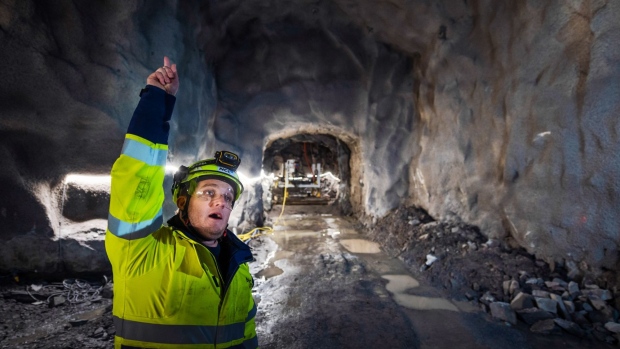Use the world’s first green steel to make a dump truck
(Bloomberg) – The world’s steelmakers need a makeover. Their industry is one of the dirtiest, and it owes about 7% of global carbon emissions. The largest producers rely mainly on the same manufacturing processes that they used a century ago, and now they are facing a bill. With the planet’s viability at stake due to global warming, producers know they must adapt to survive in a low-carbon future.
Sveriges SSAB AB, with operations from Alabama to Shanghai, collaborated with Vattenfall AB and the miner LKAB to produce the first fossil-free steel by replacing green hydrogen with coal. Deliveries of the pure metal began in August with, among others, Volvo Group, Mercedes-Benz AG and Finland’s Cargotec Oyj.
It all starts at LKAB’s mines deep inside the Arctic Circle. The area has one of the richest iron ore deposits in the world and the raw material has been extracted from there since the end of the 19th century. The stuff is mixed with additives and rolled into pellets the size of a marble – but heavier – and then taken by electric train to Luleå, home to the hydrogen-powered Hybrit plants.
Hybrit is an investment between the companies, which will spend SEK 2 billion ($ 232 million) on a test run until 2024. The main building, embossed with the logo “Fossil-free steel”, is relatively small and unclear, but the companies are preparing a version in industrial scale for approximately SEK 10 billion. It would be a few hours drive away in Gallivare and could open in 2026.
Many manufacturers are striving for green steel, but major obstacles remain. The techniques are limited to pilot projects that can only produce small amounts of the alloy, and they have higher operating costs than carbon-intensive methods. Spotify Technology SA’s billionaire founder, Daniel Ek, supports H2 Green Steel, a Swedish company that will start production in 2024.
The steel industry needs $ 30 billion in investment annually just to keep pace with demand over the next 30 years, according to Mission Possible Partnership, a proponent of accelerating carbon dioxide emissions in the highest emitting industries. Making these assets net-zero-compatible will require an additional $ 6 billion per year.
Hybrit’s path to green steel continues in a tent about the size of an ice hockey rink, with piles of pellets driving a conveyor belt to the facility. Inside, they are heated and then formed into bricks of sponge iron – the raw material for steelmaking. The unique thing is Hybrit’s use of green hydrogen, still a new technology but already central to net zero collateral from the EU and China.
Hybrite burns the pure fuel – and not dirty coal – to remove oxygen from the iron ore. It only emits water vapor. Hydrogen is not a new invention – it has been used in zeppelins and space rockets – but producing it with renewable energy makes it virtually emission-free. Governments and companies want to use green hydrogen to power vehicles, ships, aircraft and factories.
While northern Sweden is rich in renewable energy, the weather makes deliveries intermittent, so the Hybrit project is building a storage system for green hydrogen. “The industry wants to run 24/7,” says Mikael Nordlander, a carbonization manager at Vattenfall.
The prototype will be buried about 30 meters underground. Since the spring, workers have blasted away granite and gneiss. It is wet, smelly and noisy. After completion, the fuel will be kept in a tank with a size of about 100 cubic meters, equal to a couple of shipping containers. If tests succeed, the installation could be oversized to hold 1,000 times more hydrogen – enough to fill London’s Royal Albert Hall.
What comes out of the Hybrit facility are fossil-free mushroom iron stones, which are similar to a group of soap bars. They are sent to SSAB’s factory in Oxelosund, south of Stockholm. The first steel plates were manufactured this summer and delivered to Volvo in August.
Volvo presented the first vehicle made of green steel on 13 October. The electric dumper weighs 8 tons, has a virtual driver and is intended for quarries and mines. “If you look into the microscope, the steel is identical,” says Lars Stenqvist, Volvo’s chief technology officer. “Going fossil-free is something many of our customers demand.”
© 2021 Bloomberg LP




